


Nourishing Your Locks Naturally

Organic haircare is more than just a trend; it's a movement that's redefining the way we care for our hair. With an increasing focus on health, sustainability, and a desire for cleaner living, many individuals are turning to organic haircare products and practices to achieve lustrous, healthy locks. In this article, we'll explore the principles of organic haircare and why it's gaining popularity among conscientious consumers.
Clean Ingredients: One of the fundamental principles of organic haircare is the use of clean and natural ingredients. Organic shampoos, conditioners, and hair treatments contain fewer synthetic chemicals, sulfates, parabens, and artificial fragrances. Instead, they utilize plant-based ingredients that are gentle on the hair and scalp.
No Harmful Chemicals: Conventional haircare products often contain harsh chemicals that can strip hair of its natural oils and lead to damage and breakage. Organic haircare products are free from these potentially harmful chemicals, which means they're less likely to cause long-term damage to your hair.
Environmentally Friendly: Organic haircare brands often prioritize sustainable and eco-friendly practices. They use ingredients sourced from ethical and sustainable suppliers and package their products in recyclable or biodegradable materials. This reduces the environmental impact of haircare routines.
Nourishing Ingredients: Organic haircare products often contain nourishing and hydrating ingredients like aloe vera, coconut oil, argan oil, shea butter, and essential oils. These natural components provide moisture, shine, and strength to your hair.
Safer For Color-Treated Hair: For those who color their hair, organic haircare products can be gentler and safer. They help maintain the vibrancy of hair color without the risk of fading or damage.
Holistic Hair Health: Organic haircare takes a holistic approach to hair health. It emphasizes the interconnectedness of overall well-being with healthy hair. A well-balanced diet, adequate hydration, and reduced stress are all factors that contribute to the well-being of your hair.
Gentler On Sensitive Scalps: Organic haircare products are formulated with milder, natural ingredients that are less likely to irritate sensitive scalps. They can help alleviate issues like dandruff, itchiness, and flakiness without causing further discomfort.
Cruelty-Free: Many organic haircare brands are cruelty-free, meaning they don't test their products on animals. This ethical stance aligns with the principles of compassionate consumerism.
Efficacy And Results: Organic haircare products are often equally or even more effective than conventional products. Natural ingredients like aloe vera and argan oil are known for their ability to restore, strengthen, and rejuvenate hair.
Conscious Consumerism: Choosing organic haircare is a statement of conscious consumerism. It's a commitment to safer, cleaner, and more sustainable living.
The organic haircare movement represents a shift towards a healthier, more environmentally friendly way of caring for your hair. It's about embracing products that are not only safe for your locks but also for the planet. With organic haircare, you can achieve the beautiful, healthy hair you desire while making choices that support your well-being and the well-being of the Earth.
In a world where health and environmental consciousness are of growing importance, organic haircare is a choice that promotes the well-being of both individuals and the planet. So why not give organic haircare a try and be a part of a movement that nurtures your hair naturally and sustains the beauty of our world? Your hair and the environment will thank you for it.
Illuminating The Profound Meanings
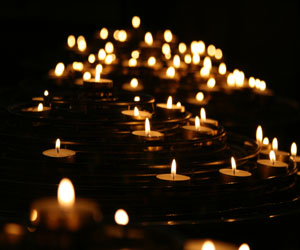 Light And Hope: Candles are often seen as symbols of light piercing through darkness, representing hope and the triumph of good over evil. Lighting a candle can be an act of optimism, a way to banish the shadows, and a beacon of hope during challenging times.
Light And Hope: Candles are often seen as symbols of light piercing through darkness, representing hope and the triumph of good over evil. Lighting a candle can be an act of optimism, a way to banish the shadows, and a beacon of hope during challenging times.
Spirituality And Religion: Candles hold significant importance in many religious and spiritual practices. In Christianity, the lighting of candles in churches signifies Christ as the "light of the world." In Buddhism, candles are lit to symbolize the enlightenment of Buddha, while in Hinduism, they are used during various ceremonies to represent the divine presence.
Memorial And Remembrance: Candles are a powerful symbol of remembrance and reverence. Lighting a candle in memory of a loved one who has passed away is a common practice. It symbolizes that the memory of that person continues to shine in our hearts.
Celebration And Joy: Candles are used during celebrations to symbolize joy and festivity. Birthday candles, for example, signify the joy of another year of life. In many cultures, candles are an essential part of wedding ceremonies, representing the joy and union of the couple.
Protection And Warding Off Evil: In some cultures, candles are believed to have protective qualities. Lighting a candle is thought to ward off negative energy, evil spirits, or bad luck. This belief is often tied to the symbolism of the candle's light dispelling darkness and negativity.
Guidance And Enlightenment: The act of lighting a candle can also symbolize the search for guidance, wisdom, or enlightenment. It is a way of asking for clarity in decision-making, a desire to gain insight, or a call for divine intervention in one's life journey.
Peace And Serenity: Candles have a soothing quality, and their warm glow is associated with peace and serenity. Many people use candles as part of their meditation or relaxation routines, creating a calming atmosphere and symbolizing inner peace.
An Artistic Masterpiece In Thread
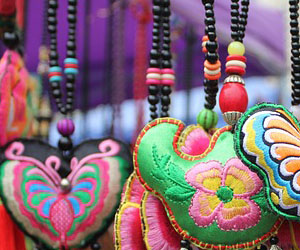 Versatility In Design: One of the satin stitch's most appealing features is its versatility. It can be used to create a wide range of designs, from simple geometric shapes to intricate, lifelike images. Whether you are working on floral motifs, animal figures, or abstract patterns, the satin stitch allows for artistic expression in various forms.
Versatility In Design: One of the satin stitch's most appealing features is its versatility. It can be used to create a wide range of designs, from simple geometric shapes to intricate, lifelike images. Whether you are working on floral motifs, animal figures, or abstract patterns, the satin stitch allows for artistic expression in various forms.
Achieving Dimension And Texture: While the satin stitch is celebrated for its smoothness, it also has the potential to add dimension and texture to embroidery projects. By altering the stitch length or layering stitches in different directions, artists can create the illusion of depth and detail, bringing designs to life.
The Importance Of Thread Selection: Thread selection is crucial when using the satin stitch. Traditional satin stitch threads include silk and rayon due to their sheen and luster. Modern options also include polyester threads that are known for their durability and colorfastness. Thread color choice plays a significant role in the overall impact of the satin stitch, enabling the creation of realistic gradients or bold, contrasting patterns.
Challenges And Techniques: While the satin stitch is beautiful, it's not without its challenges. Ensuring consistent stitch length and alignment requires practice and attention to detail. Embroiderers often use a laying tool or a frame to keep the threads smooth and untangled while stitching.
A Time-Honored Craft That Endures
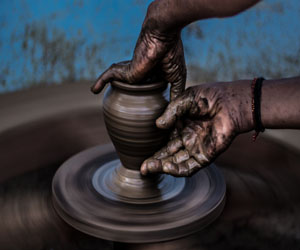 Techniques And Materials: Traditional pottery is characterized by a profound connection between the potter and the materials. Typically, it involves handbuilding techniques such as coiling, pinching, and slab-building, as well as the use of locally sourced clay and other natural materials. The techniques and materials used are often passed down through generations, preserving the authenticity and heritage of each style.
Techniques And Materials: Traditional pottery is characterized by a profound connection between the potter and the materials. Typically, it involves handbuilding techniques such as coiling, pinching, and slab-building, as well as the use of locally sourced clay and other natural materials. The techniques and materials used are often passed down through generations, preserving the authenticity and heritage of each style.
Regional Variations: One of the most compelling aspects of traditional pottery is its regional diversity. Different cultures have developed their own unique styles, forms, and designs. For example, the delicate blue and white porcelain of China is world-famous, while the intricately painted talavera ceramics of Mexico are celebrated for their vibrant patterns. Native American tribes have their distinctive pottery traditions, often incorporating symbolism and motifs reflecting their cultural heritage.
Cultural Significance: Traditional pottery is not just a craft; it is a reflection of cultural identity and history. Many traditional pottery forms have spiritual, ceremonial, or ritualistic importance within their respective cultures. In Native American Pueblo communities, for instance, pottery is often used in religious ceremonies, and the designs have deep cultural significance.

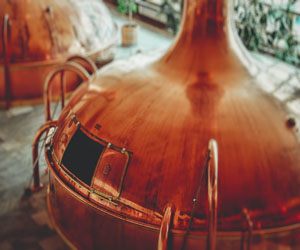



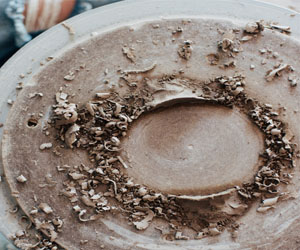
Creative Candle Making Ideas
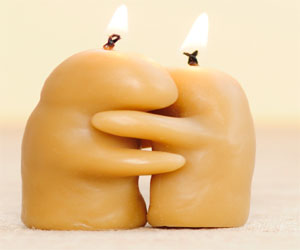 Flower-Embedded Candles: Press dried flowers or herbs between sheets of wax to create stunning, botanical candles. Whether you choose vibrant petals or aromatic herbs, these candles bring a touch of nature into your home.
Flower-Embedded Candles: Press dried flowers or herbs between sheets of wax to create stunning, botanical candles. Whether you choose vibrant petals or aromatic herbs, these candles bring a touch of nature into your home.
Ice Candle Art: Ice candles are a fascinating and innovative approach to candle making. Freeze wax around a pre-made mold filled with ice, and as the ice melts, it creates intriguing patterns in the candle. The end result is a truly one-of-a-kind piece.
Hidden Treasure Candles: Embed small, non-flammable objects like charms, gemstones, or small messages within your candles. As the wax melts, these hidden treasures are revealed, adding an element of surprise to your candle making.
Ombre Candles: Create a gradient effect by using different shades of the same color in a single candle. Gradually blend the colors as you pour the wax to achieve a smooth transition from one hue to the next.
The Art Of Shaping Clay On A Potter's Wheel
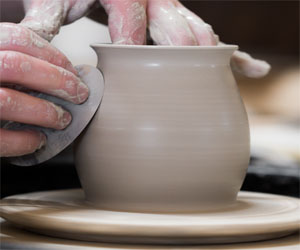 A Glimpse Into History: Wheel-throwing has an ancient history, with its origins dating back to around 4000 BCE in regions such as Mesopotamia and China. These early potters used simple, hand-driven wheels to craft their vessels. The technology evolved over time, leading to the development of foot-powered and, eventually, electric pottery wheels, which are widely used today.
A Glimpse Into History: Wheel-throwing has an ancient history, with its origins dating back to around 4000 BCE in regions such as Mesopotamia and China. These early potters used simple, hand-driven wheels to craft their vessels. The technology evolved over time, leading to the development of foot-powered and, eventually, electric pottery wheels, which are widely used today.
The Process: The wheel-throwing process begins with a lump of clay centered on the wheel head. Proper centering is a crucial skill that requires careful hand and foot coordination to achieve balance and symmetry. Once centered, the potter uses their hands to shape the clay, pulling it upward and outward, manipulating the form as it spins on the wheel. The wheel's rotation allows for the creation of consistent and precise shapes.
Technique And Skill: Wheel-throwing is a craft that demands patience and skill. Potters must control the speed and pressure applied to the clay to achieve the desired form. Various tools, such as ribs and wooden or metal shaping tools, are used to refine the shape, create textures, and add decorative elements. The level of precision required in wheel-throwing makes it both an art and a science, where mastery comes through experience and practice.
Functional And Artistic Pottery: One of the most remarkable aspects of wheel-throwing is its versatility. Potters can create a wide range of functional items, including cups, bowls, plates, and vases. The uniformity and precision offered by wheel-throwing make it well-suited for producing pottery used in daily life. At the same time, many artists utilize the wheel-throwing technique to create decorative and sculptural pieces, pushing the boundaries of what can be achieved with clay.